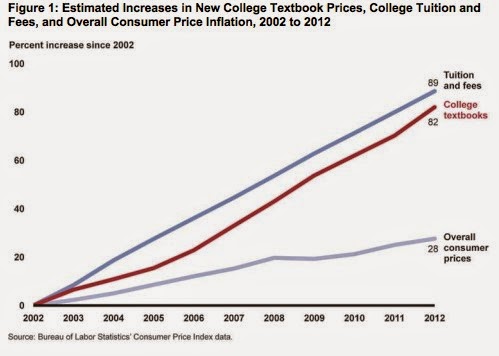You probably know this: college
tuition and textbook prices have been climbing faster than inflation for
decades.
Students are finding ways to
minimize textbook costs: renting textbooks, buying digital versions, buying
used books, buying new/used books anywhere but their college bookstores,
selling their used books when the course ends.
Here’s a couple factoids maybe
you don’t know right off hand, from Vox.com:
“The National Association of
College Stores said 78 cents of every dollar spent on new textbooks goes to
publishers,” NOT to your alma mater’s book store operation (which nevertheless
is almost certainly a profit center for the college).
Publishers claim it costs
$750,000 to develop a new textbook, complete with all the bells and whistles:
instructor manual, sample tests with answers, and online support for teachers
and students. In my experience, a lot of textbook packages could be a lot simpler, and
therefore, cheaper.
“Publishers used to spread out
the cost of a new edition over five years before publishing the next edition
and starting the cycle over. Since the publishing industry began consolidating
in the 1980s — five major publishers now control 80 percent of the market —
competition has become keener, and the window before a new edition has narrowed
from five years to three. That means higher prices so that publishers can
recoup the costs and make a profit.” In my experience, the typical “new edition”
is only superficially different from the former edition, in other words, it’s
largely a rip-off.
And here’s a little kicker: a
lot of students don’t read the assignment material in the textbook. Ask any
college student or teacher you may know.
Any part of this story make
sense to you?

No comments:
Post a Comment